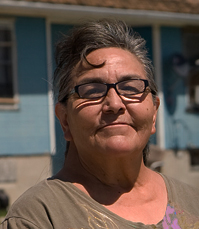|
|

 |
The last chief of the Crow, Plenty Coups spearheaded the Crow strategy to cooperate with the U.S. Army during the Plains Wars of the 1870s. As a young man of fourteen Plenty Coups went into the mountains to do a vision quest. In his dream he saw the buffalo disappear, cattle appear on the plains and only a chickadee survive a terrible storm. The dream was interpreted to mean that whites would take over the land and the Crow could survive. Spiritual leaders of the Crow concluded it would be to the advantage of the Crow to support the white invaders.
Plenty Coups and 135 Crow warriors volunteered to become scouts for General George Crook in the 1876 campaign against the Cheyenne and the Sioux. Crow scouts were also with George Custer at the battle of the Little Bighorn. After the battle Crows warriors under Plenty Coups continued to support the U.S. Army as it pursued the Sioux and the Cheyenne, the traditional enemies of the Crow.
Crow support of the U.S. Army helped them avoid the tragic fate of the Sioux. They were given a reservation in their homeland of Montana. Plenty Coups became their peacetime leader. He encouraged the Crow to take up farming and ranching and he moved from his tepee into a log farmhouse. He also opened a general store.
For the rest of his long life Plenty Coups advocated Crow interests. He insisted that Crow workmen be used when the railroad wanted to lay tracks across his territory. He pressed for the Crow to receive a share of the profits when their land was leased to oil and gas companies. When the government wanted to allow settlers to move onto Crow land he traveled to Washington ten times to fight the plan until he succeeded in blocking it. During World War I he encouraged young Crow men to join the Army and leave the enforced idleness and alcoholism of the reservation.
In 1921 he was chosen as the representative of all American Indians for the dedication of the Tomb of the Unknown Soldier. He willed his land to the U.S. government to be a memorial and museum to the Crow people. His people revered Plenty Coups and when he died in 1932 they eliminated the title “chief” from tribal leaders so that Plenty Coups would be the last Crow chief. |
|
|















